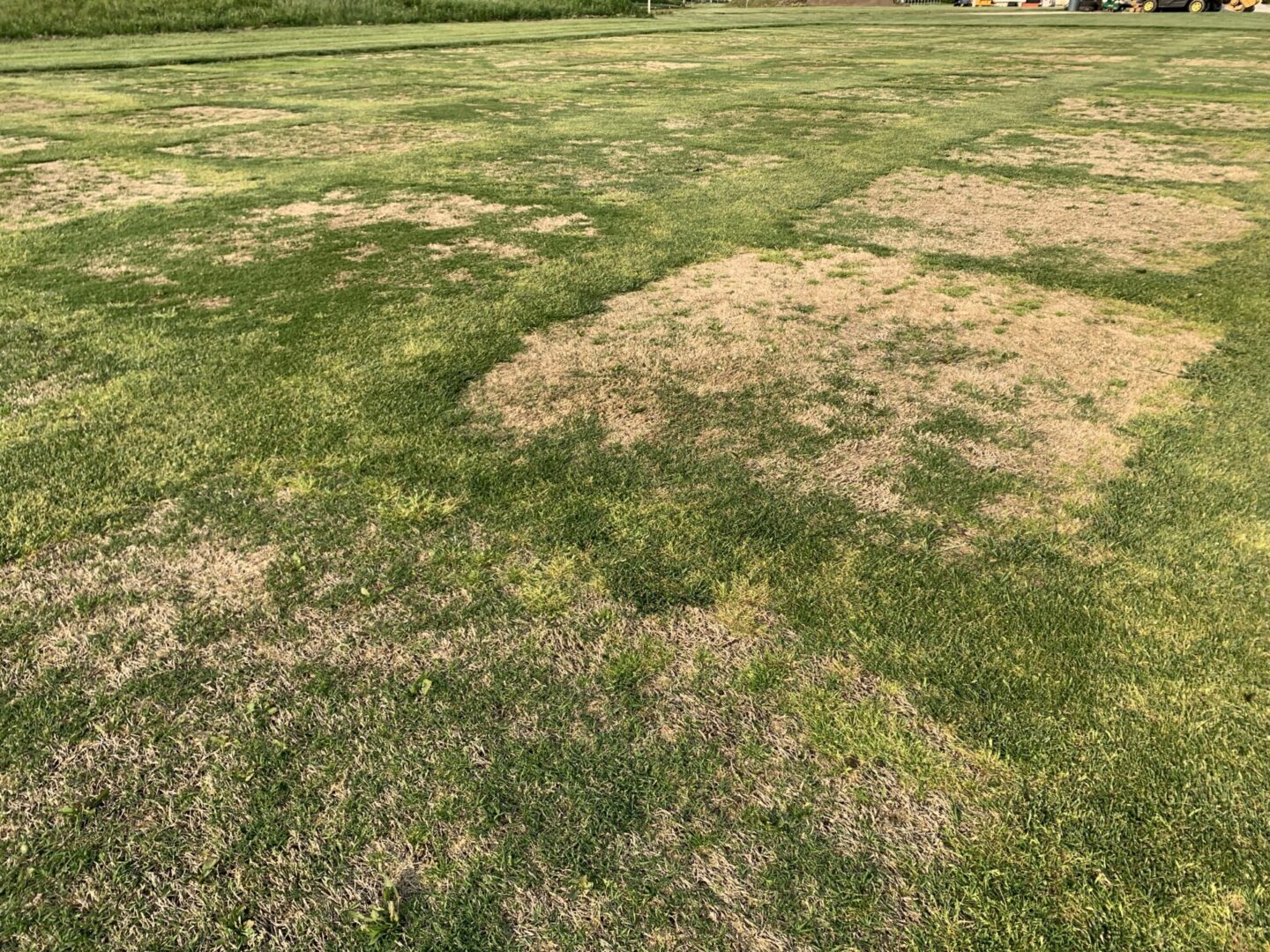Research Update – Bigelow June 2023
Bermudagrass Cultivar Evaluation – Winter Survival

As I write this research update we are about one week from the official astronomical start of summer and conditions for sustained, vigorous turf growth in the Lower Midwest has been met with fits and starts. This is especially true for the warm-season grasses like bermudagrass. Throughout Central Indiana and some of our surrounding states bermudagrass has continued to gain acceptance for athletic fields as well as high traffic golf areas like driving ranges. It is well regarded for it’s ability to tolerate close mowing (<0.5”), strong summer vigor, drought tolerance, sports traction characteristics, deep rooting and ability to self-repair into divots or worn areas via underground rhizomes and aboveground stolons.
While bermudagrass has several strengths (Remember there is NO PERFECT GRASS!), it does have a number of potential weaknesses. These include a dormant winter appearance where it turns straw brown for months, susceptibility to diseases like spring dead spot and most importantly in a climate like the Midwest the potential for winter-kill due to unpredictable frigid winter temperatures.
My research program continually participates with The National Turfgrass Evaluation Program (NTEP) to evaluate existing and experimental grasses and cultivars/varieties for the performance and regional adaptation. In these NTEP studies we plant the grasses and evaluate them for a period of 5 years. Information about the NTEP program is freely accessible to the public and can be accessed at the www.ntep.org website. The grasses are evaluated for criteria like establishment rate, visual appearance, pest susceptibility/damage (e.g. disease, weeds, insects) and long-term persistence. In June of 2019 we planted the most recent NTEP bermudagrass trial. For this trial, 42 bermudgrass entries were planted and each replicated three times. There are both seeded and vegetatively established bermudagrass. The vegetative entries were established using plugs. As far as cultivars there were numerous standards like Tifway, Latitude 36, Patriot, and Yukon as well as a wide range of experimental germplasm from turfgrass breeding programs like Oklahoma State and Mississippi State. Our trial is maintained at 0.75 inches and receives supplemental irrigation and moderate summer fertilization to promote a dense, healthy turf.
Spring Green-Up and Winter-Kill 2023
As spring is slowly turning to summer 2023 I have been in regular contact with my friends and colleagues across the transition zone. During the last 5 weeks I have been getting repeated reports of what appears to be bermudagrass winter-kill, and in some situations it is quite extensive. When they asked what I was seeing up this way, my only response has been that it has been too early to tell, but it appeared that we also sustained some winter-kill in my cultivar trial. There are numerous factors that may influence the severity of winter-kill, but the key factor is suboptimal chilling temperatures. This is often exacerbated in situations where the bermudagrass is not protected by a blanket of snow and/or synthetic turf covers.

In late December, 2022 much of the United States experienced an “Arctic blast”. To provide context on 21 December in West Lafayette the high/low air temperatures were 36/29 oF and on 23 December temperatures plummeted to 0/-9 oF (Fig. 1) Note: those do not include wind-chill temperatures! Wind speeds during the time ranged from 25-30 mph with gusts up to 55 mph. All of this is a recipe for potential winter-kill for bermudagrass.
Now what?
For areas that were subject to winter-kill (Fig. 2), at this point “It is what it is…” and now it’s time to replant if you want contiguous grass coverage for late-summer use. There are several options for re-establishment and these include: sod, sprigging and seeding. Sodding and sprigging with take the least time to fully establish which may be necessary for an area that will be utilized in late July for things like high school sports. The decision on what method one may choose for re-establishment can be complicated. For example, do you need to try and match the cultivar that did not survive? Can you use this as an opportunity to “upgrade your genetics” for a more winter-hardy, improved cultivar? This may be an opportunity to also upgrade soil drainage, as excess soil moisture can be a factor affecting winter survival.
As far as which of the 42 cultivars that have reliably survived our West Lafayette winters the past few years there are some that are more reliable for our area than others (Note: all of our cultivar have sustained “some” winter-kill, especially in Dec. 2022). As far as commercially available cultivars, the “usual suspects” of widely adopted cold-hardy vegetatively planted grasses like Patriot, Tahoma 31, Latitude 36, Northbridge survived reasonably. Further another one, Astro, that I have not seen planted in our region has performed as well as Tahoma 31 at our location for spring green-up the past two winters. By comparison, an old standard, Tifway, did not. Among the seeded bermudagrasses, as a whole they were more affected by cold temperatures than the vegetative cultivars. Some of the commercially available seeded options that have minimally survived include Yukon and Rio. What is really important, however, is that in addition to these aforementioned commercially available cultivars there are some really, really strong experimental entries that hopefully will find a commercial home and provide our turf managers with options for superior genetics to minimize the regular threat of winter-kill on bermudagrass.

